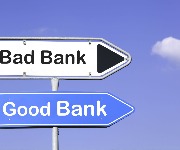Family debt rising ahead of income, says Aviva survey

Family Finance Report finds families taking on more debt in past six months.
UK families' debts are currently rising far faster than their income, according to the latest Aviva Family Finance Report.
It found the typical monthly family income has climbed 4% between July and December 2014, from £1,934 to £2,012.
However, at the same time there’s been a 3% increase in expenditure. Household debt has more than doubled, with borrowing soaring to £16,260 per household compared to £6,740 six months ago.
Family borrowing
The report found the surge in household debt came from a variety of sources.
Over the last six months family credit card debt has leapt from £1,720 to £2,940 (a 71% rise), meanwhile personal loan debt has risen from £1,210 to £2,090 (a 72% rise) and payday loan borrowing has swelled from £350 to £1,290 (a 269% rise).
The report also found the average bank overdraft for families had increased sharply over the last six months from £340 to £1,490 (a rise of 338%), adding to the burgeoning outstanding balance.
However, Aviva found families are spending less money on servicing their debts.
The amount spent on paying down credit cards, loans and other debts (excluding mortgages) has fallen from £262 to £208 a month since July 2013.
Aviva says this could be to do with rising costs elsewhere, with families spending £571 a month on mortgages/rent and council tax compared to £514 six months ago, the amount spent on public transport rising from £102 to £188 a month and the cost of motoring going up from £116 to £130 a month.
However, the report found less people are concerned about their inability to keep up with debt repayments – 21% said this would be a worry in July 2014 compared to 13% in December 2014.
[Related story: Are things improving at last for long-suffering savers?]
Bigger concerns
The biggest financial concern for families was how to cover the cost of unexpected spending like major repairs to the home (58%). This was followed by the rising cost of essentials like food and utilities (55%), serious illness (27%) and higher mortgage rates (26%).
Concerns about mortgage rates saw the biggest shift over the last six months, with 7% more families stating this as a major financial worry.
According to the report an average UK family home now costs £244,100, up nearly 10% compared to the same time last year when prices were around £222,280.
The shift means an increase of £21,820 in property wealth in just one year.
But as house prices rise Aviva says the average owed on a mortgage has gone up too. It now stands at £97,570 compared to £48,880 in December 2013.
This could be down to families releasing equity but it could also be because families buying homes now have to borrow much more.
With mortgage rates set to rise once the Base Rate moves from its record low of 0.5% the bigger debts could prove a major strain on family finances.
Family saving
Despite stresses on family incomes and looming debt concerns the study shows more families are saving regularly.
The proportion saving nothing each month has hit a record low of 24% down from 39% compared to three years ago – a major shift according to Aviva.
However, the average amount put away by families has dipped slightly from £85 a month to £84 a month over the last six months.
Also savings cushions have declined from £2,274 to £1,770 over the last six months, suggesting more people are dipping into their pots to cope with other costs.
The good news is that fewer families are without some form of savings cushion, down from 25% in October 2011 to 17% in December 2014.
However, the report warns that Britain’s families have relatively small savings cushions. This means they might struggle in the event of a sudden shock to the family finances, through an accident, serious illness or bereavement.
And 30% of families have less than £500 in savings while 53% have less than £5,000 put away for a rainy day.
Financial planning
Though savings balances have declined more are taking other steps to protect their families from the unexpected.
Aviva found 42% of families had take out life insurance compared to 36% six months ago, while 15% now have health insurance (up from 13%), 16% have critical illness cover (up from 11%) and 10% have income protection (up from 7%).
Regional variations
Of course there are regional variations when it comes to income, savings, house prices and protection.
Aviva found London families have the highest monthly income at £2,248. At the other end of the scale families in the North East have the lowest monthly income at £1,827 a month – 16% less.
Families living in London also have the largest savings pots, with an average £9,500 put away for a rainy day. In contrast the smallest savings pots are located in Wales where an average of £1,230 is put away – 64% below the average monthly income for the region.
And unsurprisingly the highest house prices are found in London where the average family house is worth £335,000, two and a half times more than the average family house price in Wales of £132,390.
When it comes to protection the Scottish are most likely to hold critical illness cover at 13% and the Welsh least likely at 6%, while 11% of London families have income protection. Those in Scotland are most likely to have life insurance at 48% followed by the South East at 41%.
Get to grips with your family's financial future with lovemoney.com's Plans
Most Recent
Comments
Be the first to comment
Do you want to comment on this article? You need to be signed in for this feature








